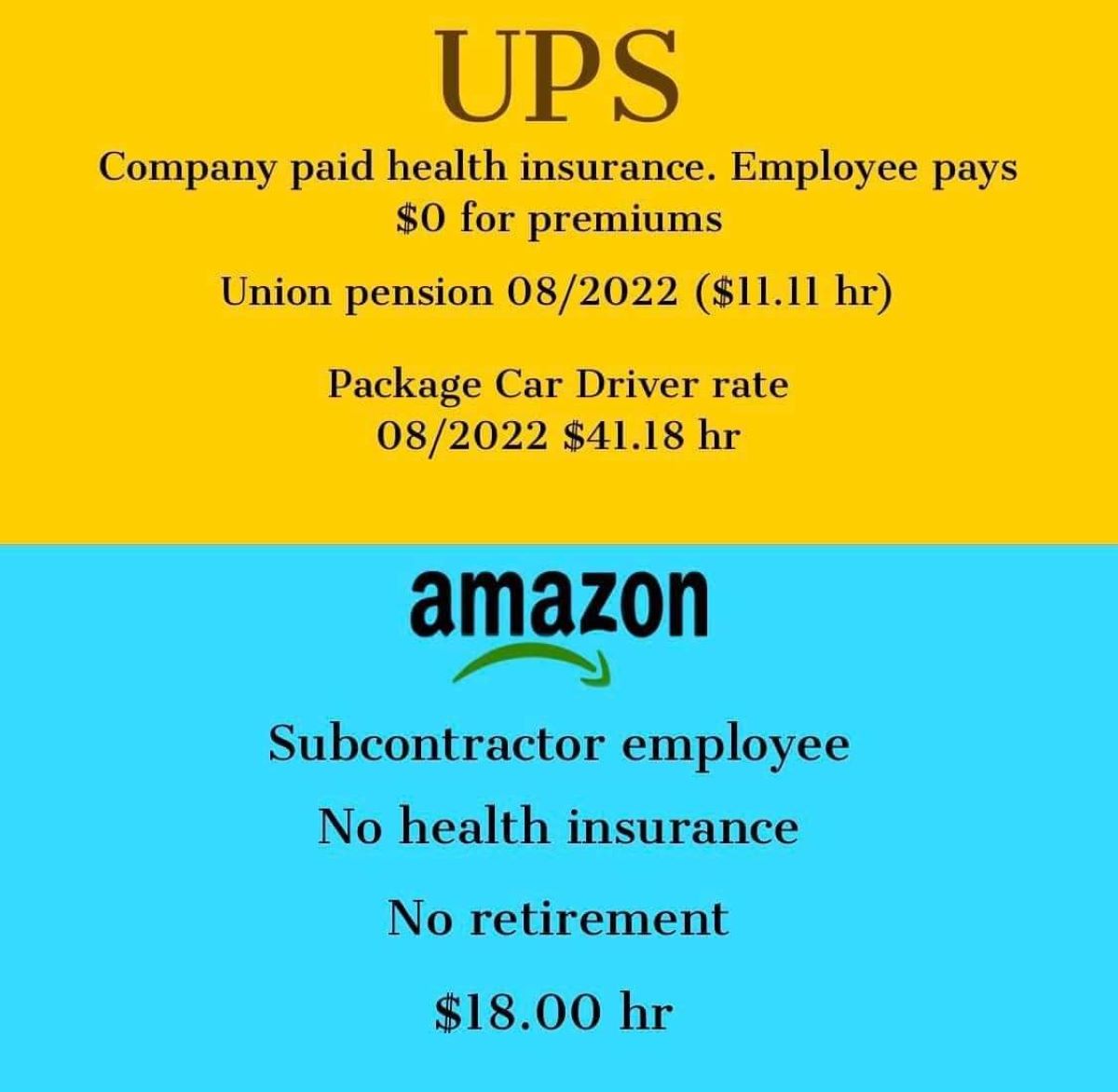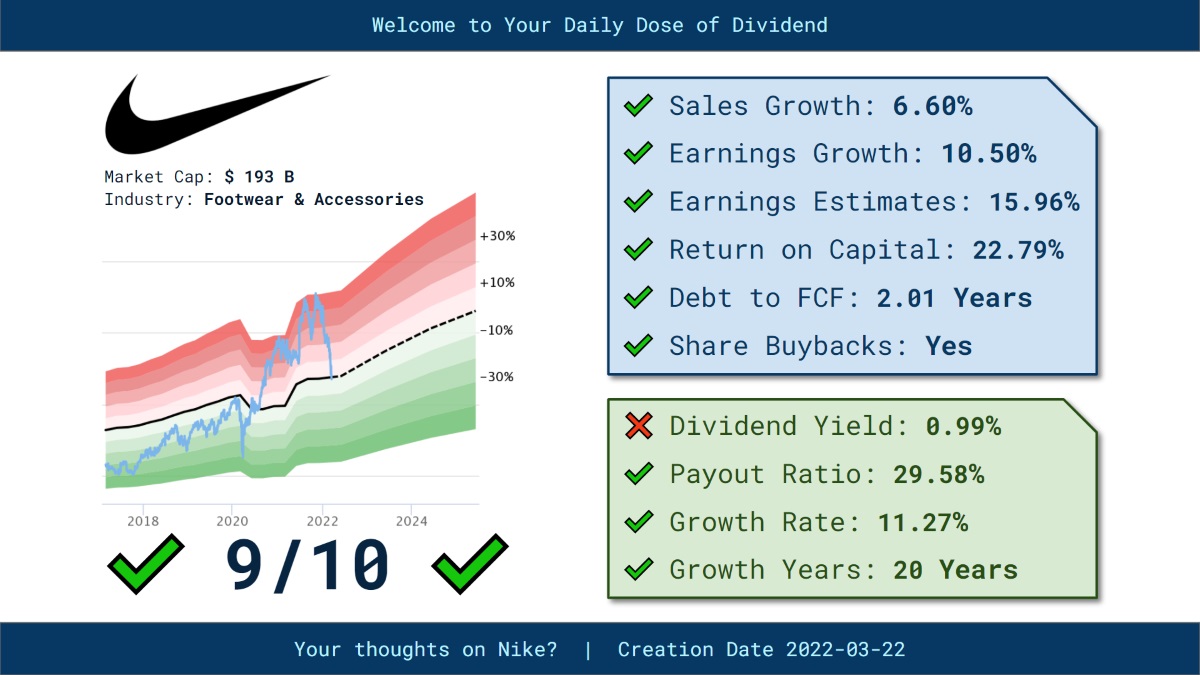

Finance
How To Take Advantage Of Health Insurance
Published: October 30, 2023
Learn how to maximize your financial benefits by leveraging health insurance. Take advantage of the coverage options available to secure your health and save on medical expenses.
(Many of the links in this article redirect to a specific reviewed product. Your purchase of these products through affiliate links helps to generate commission for LiveWell, at no extra cost. Learn more)
Table of Contents
Introduction
Welcome to the world of health insurance, where having the right coverage can make a significant difference in your financial well-being and peace of mind. Health insurance is a vital tool that helps individuals and families manage the rising costs of medical care. Whether you’re considering getting health insurance for the first time or looking to make the most of your existing coverage, this article will provide you with valuable insights to help you navigate the complex world of health insurance.
Health insurance is designed to protect you from the high costs of medical expenses by sharing the financial burden with an insurer. It provides coverage for a wide range of services, including doctor visits, hospital stays, prescription medications, and more. With the ever-increasing costs of healthcare, having health insurance is not only a wise financial decision but also a necessity.
Understanding how health insurance works and knowing how to choose the right plan can be overwhelming for many people. The intricacies of deductibles, copayments, and networks can leave your head spinning. However, with a little knowledge and guidance, you can navigate the insurance landscape with confidence.
Throughout this article, we will explore the various aspects of health insurance and provide you with practical tips to help you take full advantage of your coverage. We will discuss choosing the right health insurance plan, maximizing coverage, managing out-of-pocket costs, understanding insurance terminology, navigating the claims process, and shopping for health insurance effectively.
By the end of this article, you will have a clear understanding of how health insurance works and the strategies you can employ to make the most of your coverage. So, let’s dive in and empower ourselves with the knowledge that will not only protect our physical well-being but also safeguard our financial futures.
Understanding Health Insurance
Health insurance is a contract between an individual or a group and an insurance company. It provides protection against the high costs of medical expenses by paying for a portion or all of the covered services. Understanding the fundamental concepts of health insurance can help you make informed decisions when choosing a plan and utilizing your coverage.
One of the key concepts in health insurance is “premium.” The premium is the amount you pay to the insurance company on a regular basis, usually monthly or annually, to maintain your coverage. It is important to pay your premiums consistently to ensure uninterrupted access to healthcare services.
Another essential aspect of health insurance is the “deductible.” A deductible is the amount you must pay out of pocket before your insurance starts to cover the costs. For example, if you have a $1,000 deductible, you are responsible for paying the first $1,000 of medical expenses before your insurance kicks in.
Once you have met your deductible, the insurance company will usually cover a portion of the remaining costs, known as “coinsurance.” For instance, if your insurance policy has a 20% coinsurance after the deductible, you will be responsible for paying 20% of the medical expenses, while your insurance will cover the remaining 80%.
In addition to coinsurance, health insurance plans often include “copayments” or “copays.” A copayment is a fixed amount you pay at the time of receiving healthcare services, such as a visit to the doctor’s office or filling a prescription. Copayments typically vary depending on the type of service, such as primary care, specialist visits, or medications.
It’s important to note that insurance companies usually have a network of healthcare providers, known as an “in-network” or “preferred provider organization” (PPO). Visiting in-network providers often results in lower out-of-pocket costs compared to seeing providers outside the network, known as “out-of-network” providers.
Understanding the terms and concepts of health insurance can help you select a plan that meets your needs and budget. It’s crucial to carefully review the details of each plan’s coverage, including the deductibles, copayments, coinsurance, and network restrictions, to ensure it aligns with your healthcare requirements.
Now that we have a basic understanding of health insurance, let’s explore the process of choosing the right plan to suit your specific needs and preferences.
Choosing the Right Health Insurance Plan
Choosing the right health insurance plan can feel like a daunting task, given the multitude of options available. However, by considering your specific healthcare needs and evaluating different plan features, you can make an informed decision that provides the best coverage and value for your situation.
The first step in choosing a health insurance plan is to assess your healthcare needs. Consider factors such as your age, current health status, any ongoing medical conditions, and the frequency of doctor visits or prescriptions. Individuals with chronic conditions may benefit from plans with comprehensive coverage and lower out-of-pocket costs, while those in good health may opt for more cost-effective options.
Next, determine the type of health insurance plan that suits your needs. The most common types include Health Maintenance Organization (HMO), Preferred Provider Organization (PPO), and Point of Service (POS) plans. HMO plans generally require you to choose a primary care physician and obtain referrals for specialist care. PPO plans offer more flexibility in choosing healthcare providers, including out-of-network options, while POS plans combine aspects of both HMO and PPO plans.
Once you’ve identified the type of plan that suits you, compare the different options available. Pay close attention to the coverage details, including deductibles, copayments, coinsurance, and out-of-pocket maximums. Also, consider the network of providers and ensure it includes the doctors, hospitals, and specialists you prefer or may need in the future.
When evaluating costs, it’s important to look beyond the monthly premiums. Consider how the plan’s deductibles and copayments align with your anticipated healthcare utilization. If you expect frequent doctor visits or anticipate the need for medications, a plan with lower copayments may be more suitable. On the other hand, if you seldom need medical care, a plan with higher copayments and lower premiums may be more cost-effective.
Additionally, examine the plan’s out-of-pocket maximum, which is the highest amount you will have to pay during a policy period. Once you reach the out-of-pocket maximum, the insurance company will typically cover 100% of covered expenses, providing a financial safety net in case of significant medical expenses.
Finally, don’t forget to consider the additional benefits and services offered by each plan. Some plans may include perks such as telehealth services, wellness programs, or prescription drug coverage. These extras can enhance your healthcare experience and provide added value.
By carefully evaluating your healthcare needs, comparing plan options, and considering costs and benefits, you can select a health insurance plan that aligns with your individual requirements. Remember to review and reassess your plan annually, as your circumstances and healthcare needs may change over time.
Now that you have chosen the right health insurance plan, let’s explore how you can maximize your coverage to get the most out of your policy.
Maximizing Coverage
Once you have chosen a health insurance plan that suits your needs, it’s important to understand how to make the most of your coverage. Maximizing your health insurance coverage involves taking advantage of the benefits and services offered by your plan while keeping costs in check. Here are some strategies to help you maximize your health insurance coverage:
1. Understand your plan’s benefits: Take the time to familiarize yourself with the specifics of your plan. Review the coverage details, including which services are covered and which may require prior authorization. Understand the limitations and exclusions of your plan to avoid unexpected expenses.
2. Use in-network providers: Whenever possible, seek care from healthcare providers who are in-network with your insurance plan. In-network providers have negotiated rates with the insurance company, resulting in lower out-of-pocket costs for you.
3. Utilize preventive care services: Many health insurance plans offer free or low-cost preventive care services, such as vaccinations, screenings, and annual check-ups. Take advantage of these services to catch potential health issues early and prevent costly treatments down the line.
4. Research prescription drug coverage: If your plan includes prescription drug coverage, understand the formulary, which is a list of covered medications. Opt for generic drugs when available, as they are typically more cost-effective.
5. Take advantage of wellness programs: Some insurance plans offer wellness programs that incentivize healthy behaviors. These programs may offer discounts on gym memberships, reward points for meeting health goals, or access to wellness resources. Participating in such programs can not only improve your health but also reduce your healthcare costs.
6. Coordinate care with your primary care physician: Establishing a relationship with a primary care physician (PCP) can help ensure that your healthcare needs are well-coordinated. Your PCP can help manage your overall health, facilitate referrals to specialists or other services, and serve as a central point of contact for your care.
7. Keep track of medical expenses: Keep a record of your medical expenses, including bills, receipts, and insurance statements. Monitor your healthcare spending to ensure accuracy and identify any potential errors or discrepancies.
8. Review and update your coverage annually: Health insurance plans can change from year to year, so it’s essential to review your coverage during the open enrollment period and make any necessary adjustments. Consider changes in your health status, anticipated medical needs, and any changes in the plan’s benefits.
By implementing these strategies, you can make the most of your health insurance coverage and optimize your healthcare experience. Remember, being informed and proactive about your coverage can lead to better health outcomes while saving you money in the long run.
Now let’s explore how utilizing preventive care can not only improve your health but also save you money in the long run.
Utilizing Preventive Care
One of the key benefits of health insurance is access to preventive care services. Preventive care focuses on preventing or detecting diseases and conditions early, leading to better health outcomes and potentially reducing healthcare costs in the long run. By taking advantage of these services, you can prioritize your well-being and potentially avoid more serious health issues down the line.
Preventive care services typically include routine check-ups, immunizations, screenings, and counseling. These services are designed to identify health risks, catch diseases in their early stages when they are more treatable, and promote overall wellness. Many health insurance plans cover preventive care at little to no cost, meaning you can receive essential screenings and services without having to pay a deductible or copayment.
Regular check-ups with your primary care physician (PCP) are a vital component of preventive care. During these visits, your PCP can assess your overall health, discuss any concerns or symptoms you may have, and provide guidance on maintaining a healthy lifestyle. They may also order or recommend screenings based on your age, gender, and medical history.
Immunizations, or vaccinations, are an important form of preventive care, particularly for children and adults at higher risk of certain diseases. Vaccines protect against a wide range of infections, such as influenza, measles, hepatitis, and human papillomavirus (HPV). Staying up to date with recommended vaccinations can help prevent the spread of infectious diseases and protect your long-term health.
Screenings are another crucial aspect of preventive care. These tests aim to detect certain diseases or conditions before symptoms appear. Examples of common screenings include blood pressure checks, cholesterol tests, mammograms, Pap smears, colonoscopies, and bone density scans. Early detection allows for timely intervention and treatment, potentially preventing the progression of diseases and reducing associated healthcare costs.
Counseling services can also be a part of preventive care. Mental health screenings, counseling sessions, and interventions for issues such as substance abuse, tobacco cessation, and weight management can help individuals maintain their emotional well-being and address risk factors that can impact physical health.
Utilizing preventive care not only improves your overall health but can also save you money in the long run. By detecting and addressing health issues early, you may be able to avoid more costly treatments or interventions later on. Additionally, staying on top of recommended screenings and immunizations can help maintain overall wellness and reduce the risk of developing chronic conditions.
It’s important to note that while preventive care services are typically fully covered by health insurance, there may be certain requirements, such as age or frequency limitations, or specific guidelines to follow. Familiarize yourself with your plan’s coverage details and consult with your healthcare provider to ensure you are taking advantage of all the preventive care services available to you.
Now, let’s delve into the practical strategies for managing out-of-pocket costs associated with health insurance.
Managing Out-of-Pocket Costs
While health insurance provides valuable coverage, there are often out-of-pocket costs that individuals are responsible for. These costs can include deductibles, copayments, coinsurance, and expenses for services not covered by your insurance plan. Managing these costs effectively can help you stay on top of your healthcare expenses and make the most of your coverage. Here are some strategies to consider:
1. Budget for healthcare expenses: Plan ahead and incorporate healthcare costs into your budget. Set aside funds specifically for out-of-pocket expenses, such as deductibles and copayments. By allocating a portion of your budget to healthcare, you can avoid financial stress when medical bills arise.
2. Understand your plan’s costs: Familiarize yourself with your health insurance plan’s details, including the specific costs associated with different services. Know your deductible amount, copayment rates, and coinsurance percentages. This knowledge will help you anticipate expenses and make informed decisions about your healthcare.
3. Compare costs before seeking care: For non-emergency medical services, it can be beneficial to research and compare costs among different providers. Prices for medical procedures can vary significantly, even within the same network. By shopping around and choosing a more cost-effective option, you can help minimize your out-of-pocket expenses.
4. Consider generic or lower-cost alternatives: When prescribed medication, ask your healthcare provider if there are generic equivalents or lower-cost alternatives available. Generic drugs are typically less expensive than brand-name medications but offer the same active ingredients and effectiveness.
5. Utilize preventive care: As discussed earlier, preventive care is often covered at no cost under health insurance plans. By taking advantage of these services, you can maintain your health and catch potential issues early, potentially avoiding more extensive and costly treatment in the future.
6. Explore flexible spending accounts (FSAs) or health savings accounts (HSAs): If available, consider using FSAs or HSAs to help manage out-of-pocket healthcare costs. These accounts allow you to set aside pre-tax dollars for medical expenses. Contributions to an FSA are typically made through your employer, while an HSA can be opened if you have a high-deductible health insurance plan.
7. Review medical bills for errors: Mistakes on medical bills are not uncommon. Carefully review your billing statements and explanation of benefits (EOB) to ensure accuracy. If you notice any discrepancies or questionable charges, contact your insurance company or healthcare provider to clarify or dispute the charges.
8. Seek financial assistance programs: In some cases, individuals may qualify for financial assistance programs offered by hospitals, clinics, or pharmaceutical companies. These programs can help mitigate the financial burden of medical expenses, especially for low-income individuals or those facing financial hardship.
By implementing these strategies, you can effectively manage your out-of-pocket healthcare costs and mitigate the impact on your finances. Remember to balance your healthcare needs with your budgetary constraints and explore options that offer the best value while ensuring quality care.
Now, let’s explore some common health insurance terminology that can be useful for better understanding and navigating your health insurance policy.
Understanding Health Insurance Terminology
Understanding the terminology used in health insurance policies is essential for effectively navigating your coverage and making informed decisions about your healthcare. Here are some common health insurance terms that you should be familiar with:
1. Premium: The premium is the amount you pay to the insurance company for your health insurance coverage. It is often paid on a monthly or annual basis, and it is essential to pay your premium consistently to maintain your coverage.
2. Deductible: The deductible is the amount you are required to pay out of pocket before your insurance coverage kicks in. For example, if you have a $1,000 deductible, you are responsible for paying the first $1,000 of medical expenses before your insurance starts covering the costs.
3. Copayment (Copay): A copayment is a fixed amount you pay for certain medical services at the time of receiving care. For example, you may have a $20 copayment for a visit to your primary care physician or a $10 copayment for generic prescription medications.
4. Coinsurance: Coinsurance is the percentage of the medical costs you are responsible for after meeting your deductible. For example, if your insurance policy has a 20% coinsurance after the deductible, you pay 20% of the costs, while your insurance covers the remaining 80%.
5. Out-of-Pocket Maximum: The out-of-pocket maximum is the maximum amount you have to pay for covered medical expenses during a policy period. Once you reach this limit, your insurance company typically covers 100% of the costs for covered services, providing financial protection.
6. Network: A network refers to the group of healthcare providers, hospitals, and facilities that have contracted with a specific insurance company. In-network providers have agreed to accept negotiated rates, resulting in potentially lower out-of-pocket costs for policyholders. Out-of-network providers are not contracted with the insurance company and may result in higher out-of-pocket expenses.
7. Preauthorization: Some health insurance plans require preauthorization for certain services and procedures. This means you need approval from your insurance company before receiving the service to ensure it is medically necessary and covered by your plan.
8. Explanation of Benefits (EOB): The EOB is a statement or document sent by the insurance company after a medical claim has been processed. It provides details on the services rendered, the amount billed, the amount paid by the insurance company, and any amount that is your responsibility.
It’s important to familiarize yourself with these terms and review your health insurance policy documents to understand how they apply to your specific coverage. Being knowledgeable about health insurance terminology will help you navigate the complexities of your policy, communicate effectively with your insurance company, and make informed decisions regarding your healthcare.
Now that you have a better understanding of health insurance terminology, let’s explore the process of navigating the claims process smoothly.
Navigating the Claims Process
The claims process is an integral part of utilizing your health insurance coverage. Understanding how to navigate this process can help ensure that your medical expenses are appropriately covered and minimize any potential frustrations. Here are the steps to navigate the claims process smoothly:
1. Seek in-network providers: Whenever possible, visit healthcare providers who are in-network with your insurance plan. In-network providers have agreed-upon rates with your insurance company, making the billing and claims process more straightforward. This can help avoid any potential disputes or unexpected costs.
2. Provide accurate information: When receiving healthcare services, provide your insurance information accurately and verify that the provider has the correct details. This includes your insurance ID, group number, and any necessary authorizations or referrals. Providing accurate information helps ensure that your claims are processed correctly.
3. Keep copies of documentation: Maintain copies of all relevant documentation, including bills, receipts, and any paperwork received from providers. This documentation will serve as evidence of the services rendered and can help address any discrepancies or disputes that may arise during the claims process.
4. Understand your coverage: Familiarize yourself with your health insurance policy and understand what services are covered and any limitations or exclusions. This knowledge will help you identify potential issues with claims and ensure that you receive the maximum benefit from your coverage.
5. Review your Explanation of Benefits (EOB): After a medical claim is processed, you will receive an EOB from your insurance company. Review it carefully to ensure that the services billed align with the services received and that the covered amounts and any patient responsibilities are accurate. If you have any questions or notice any discrepancies, contact your insurance company for clarification.
6. Follow up on outstanding claims: If you notice that a claim has not been processed or reimbursed within a reasonable timeframe, follow up with your healthcare provider and insurance company. They can provide updates on the status of the claim and assist in resolving any issues.
7. Appeal if necessary: If a claim is denied or not covered to your satisfaction, you have the right to appeal the decision. Follow the appeal process outlined by your insurance company, provide any necessary documentation or additional information, and advocate for coverage based on the terms of your policy.
8. Keep records of communications: Maintain detailed records of any communication with your insurance company, including phone calls, emails, or letters. Note the date, time, name of the representative, and a summary of the conversation. This documentation can be valuable evidence if any disputes or issues arise during the claims process.
Navigating the claims process requires patience and attention to detail. By following these steps and staying actively involved, you can ensure that your claims are processed correctly and that you receive the maximum benefit from your health insurance coverage.
Now that you are well-versed in navigating the claims process, let’s explore some helpful tips for shopping for health insurance effectively.
Tips for Shopping for Health Insurance
Shopping for health insurance can be overwhelming due to the numerous options available in the market. However, with careful consideration and the following tips, you can make an informed decision and find a health insurance plan that meets your specific needs:
1. Assess your healthcare needs: Before diving into the insurance options, evaluate your healthcare needs and those of your family members. Consider factors such as age, existing medical conditions, and anticipated healthcare services. This will help you determine the level of coverage required.
2. Research different types of plans: Familiarize yourself with the different types of health insurance plans available, such as Health Maintenance Organizations (HMOs), Preferred Provider Organizations (PPOs), and Exclusive Provider Organizations (EPOs). Understand the pros and cons of each type and choose one that aligns with your preferences and healthcare needs.
3. Compare plan features: Look beyond the premiums when comparing health insurance plans. Consider factors like deductibles, copayments, coinsurance, out-of-pocket maximums, and the network of healthcare providers. Analyze how these features interact to provide the best coverage and value for your specific needs.
4. Determine if your preferred providers are in-network: If you have specific doctors or healthcare providers you prefer to see, check whether they are part of the insurance plan’s network. Having access to preferred providers can ensure continuity of care and potentially reduce out-of-pocket costs.
5. Review prescription drug coverage: If you take regular medications, assess the prescription drug coverage offered by different health insurance plans. Consider factors such as formulary lists, tiered pricing, and coverage for brand-name versus generic drugs. Choose a plan that provides cost-effective coverage for your specific medication needs.
6. Explore additional benefits: Consider any additional benefits or services offered by the health insurance plans, such as telehealth services, wellness programs, or preventive care options. These extras can add value to your coverage and improve your overall healthcare experience.
7. Check financial stability and customer satisfaction: Research the financial stability and reputation of the insurance companies you are considering. Look for customer reviews, ratings, and complaint records to ensure you select a company that is reliable and has a good track record of customer satisfaction.
8. Seek expert guidance if needed: If you find the process overwhelming or have specific questions, consider seeking assistance from insurance brokers, healthcare advocates, or financial advisors. These experts can help explain complicated terms, compare different plans, and guide you to make the best decision based on your circumstances.
Once you have chosen a health insurance plan, carefully review all the policy documents before signing up. Take note of enrollment deadlines, terms of coverage, and any waiting periods. Be proactive in ensuring that your chosen plan meets your needs and offers the appropriate coverage.
By following these tips, you can navigate the process of shopping for health insurance confidently and choose a plan that provides the best coverage and value for you and your family.
Now, let’s conclude our journey through health insurance and recap the key takeaways.
Conclusion
Navigating the world of health insurance can be complex, but armed with the right knowledge and strategies, you can make informed decisions and maximize your coverage. Understanding the fundamental concepts of health insurance, such as premiums, deductibles, copayments, and coinsurance, provides a solid foundation for selecting the right plan.
Choosing the right health insurance plan involves assessing your healthcare needs, comparing plan features, and considering costs and benefits. By taking advantage of preventive care services, utilizing in-network providers, and understanding your policy’s coverage, you can maximize the value of your health insurance.
Managing out-of-pocket costs requires careful planning, budgeting, and exploring cost-saving measures such as generic drugs and seeking financial assistance when available. Navigating the claims process involves providing accurate information, reviewing Explanation of Benefits (EOB) statements, and advocating for accurate reimbursement.
When shopping for health insurance, evaluate your healthcare needs, compare plan options, review network providers and prescription drug coverage, and seek additional guidance if necessary. Making an informed decision based on your specific needs and preferences will lead to the most suitable plan.
Remember, health insurance is not just a financial safety net but a tool that enables you to prioritize your well-being and receive the necessary healthcare services. By staying informed, proactive, and engaged with your health insurance coverage, you can protect your health, manage costs, and achieve peace of mind.
Now armed with this comprehensive knowledge, go forth and navigate the world of health insurance confidently and effectively. Your physical and financial well-being are worth it.














